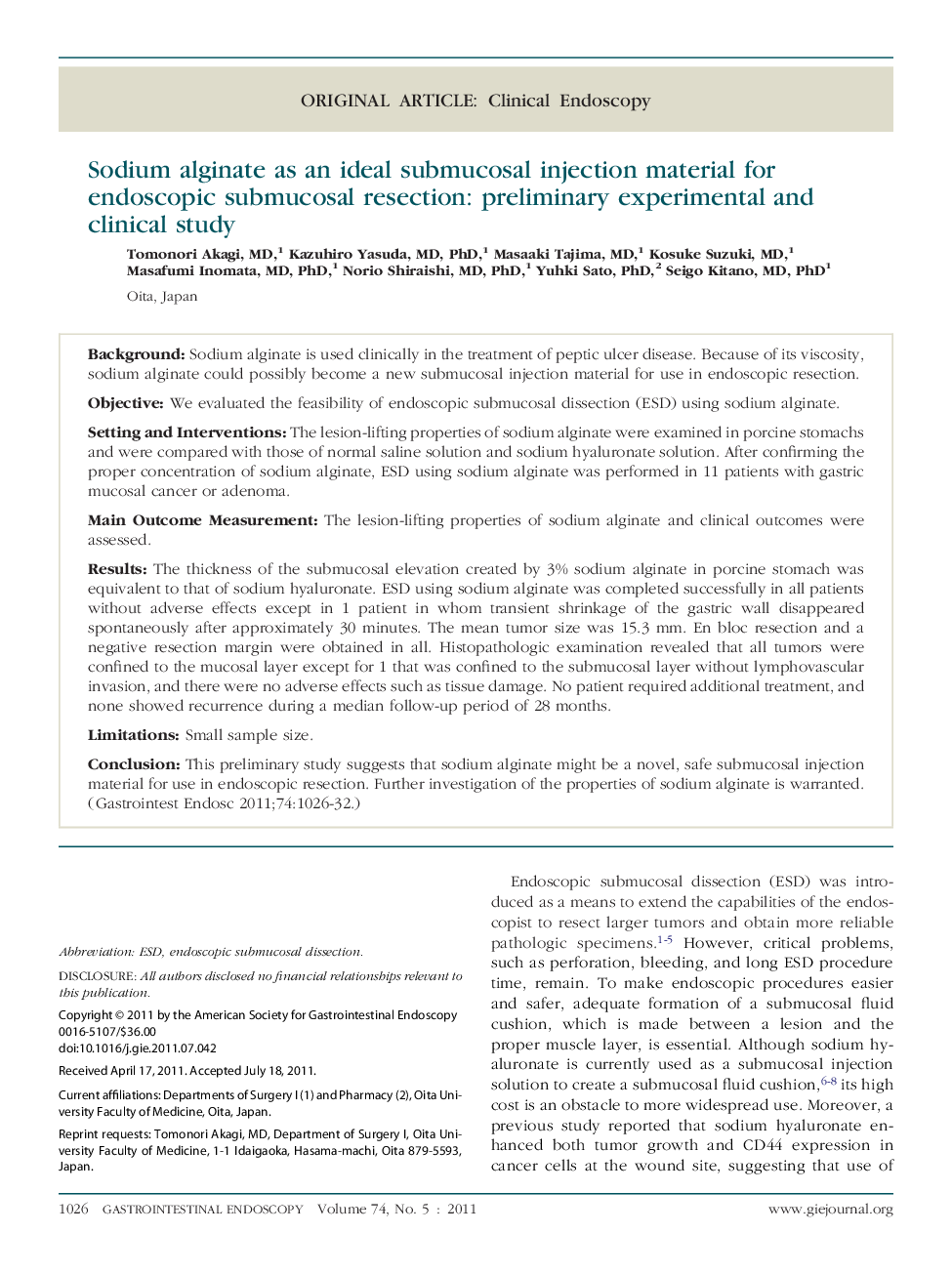| Article ID | Journal | Published Year | Pages | File Type |
|---|---|---|---|---|
| 3305358 | Gastrointestinal Endoscopy | 2011 | 7 Pages |
BackgroundSodium alginate is used clinically in the treatment of peptic ulcer disease. Because of its viscosity, sodium alginate could possibly become a new submucosal injection material for use in endoscopic resection.ObjectiveWe evaluated the feasibility of endoscopic submucosal dissection (ESD) using sodium alginate.Setting and InterventionsThe lesion-lifting properties of sodium alginate were examined in porcine stomachs and were compared with those of normal saline solution and sodium hyaluronate solution. After confirming the proper concentration of sodium alginate, ESD using sodium alginate was performed in 11 patients with gastric mucosal cancer or adenoma.Main Outcome MeasurementThe lesion-lifting properties of sodium alginate and clinical outcomes were assessed.ResultsThe thickness of the submucosal elevation created by 3% sodium alginate in porcine stomach was equivalent to that of sodium hyaluronate. ESD using sodium alginate was completed successfully in all patients without adverse effects except in 1 patient in whom transient shrinkage of the gastric wall disappeared spontaneously after approximately 30 minutes. The mean tumor size was 15.3 mm. En bloc resection and a negative resection margin were obtained in all. Histopathologic examination revealed that all tumors were confined to the mucosal layer except for 1 that was confined to the submucosal layer without lymphovascular invasion, and there were no adverse effects such as tissue damage. No patient required additional treatment, and none showed recurrence during a median follow-up period of 28 months.LimitationsSmall sample size.ConclusionThis preliminary study suggests that sodium alginate might be a novel, safe submucosal injection material for use in endoscopic resection. Further investigation of the properties of sodium alginate is warranted.
